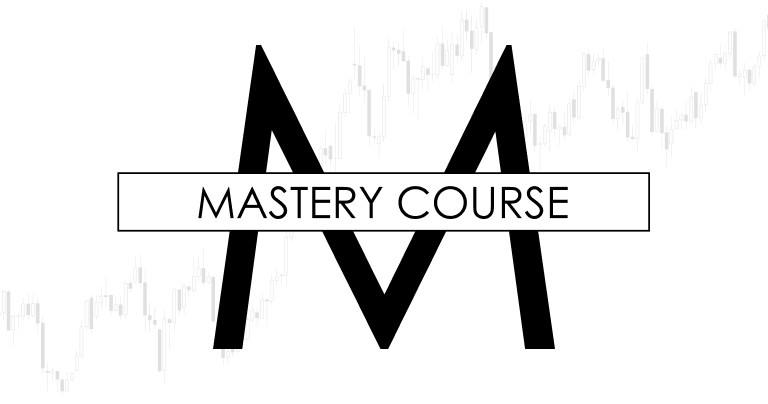-
3.1 - Introduction to Ment Blocks (MBs)
-
3.2 - Ment Blocks across timeframes
-
3.3 - The universal application of Ment Blocks
-
3.4 - Fractal nature and timeframes
-
3.5 - Nested Ment Blocks
-
3.6 - Introduction to Double MB (DMB)
-
3.7 - Connecting micro and macro views
-
3.8 - Interpreting MBs in higher timeframes
-
3.9 - The cycle of supply and demand
-
3.10 - Example - NQ futures case study
-
3.11 - A multi-timeframe perspective
-
3.12 - Example - Analyzing MBs on UTHR stock
-
3.13 - Example - A Google trade breakdown
-
4.1 - Introduction to market structure
-
4.2 - Structure and order flow
-
4.3 - Example - A GBTC trade walkthrough
-
4.4 - Analyzing higher highs and higher lows
-
4.5 - Rule of Left-to-Right
-
4.6 - NVIDIA weekly chart case study
-
4.7 - Anticipating a higher low
-
4.8 - Principles of basic structure
-
4.9 - True delivery of the structure
-
5.1 - The entry timeframe
-
5.2 - Introduction to EVC (entry, validation, context)
-
5.3 - Theoretical EVC importance
-
5.4 - Examples of theoretical EVC
-
5.5 - Why EVC is important
-
5.6 - Adapting EVC to your trading style
-
5.7 - Understanding lower timeframe trading
-
5.8 - Higher timeframe trading: Pros and cons
-
6.1 - Generality of EVC
-
6.2 - Introduction to accumulation model
-
6.3 - Introduction to market stages
-
6.4 - Price delivery through Stage 1 and Stage 2
-
6.5 - Stages example - NVDA
-
6.6 - Stage 1, stage 2 example - USDJPY
-
6.7 - Stages and trends
-
6.8 - Wins, losses, and break-evens
-
6.9 - Preface to deeper stage understanding
-
6.10 - Deep stage 1 stage 2 and complex accumulation
-
7.1 - Stages and cycles
-
7.2 - Snowflake rule
-
7.3 - The full market cycle
-
7.4 - Applying the full market cycle
-
7.5 - Full cycle executions
-
7.6 - MBs and the entry full cycle
-
7.7 - MBs and fractal stages
-
7.8 - Entry points within market cycles
-
7.9 - Cycles - from minutes to weeks
-
7.10 - Markets cycles on all assets and timeframes
-
7.11 - Bullish and bearish cycles across assets
-
9.1 - Introduction to entries
-
9.2 - Classifying entries to MB, FMB, FFMB
-
9.3 - Identifying entry opportunities with DMB
-
9.4 - Accumulation and momentum MBs
-
9.5 - Accumulation MB characteristics
-
9.6 - Momentum MB characteristics
-
9.7 - Bridging the gap between the E and the V
-
9.8 - Examples of trades (from V to E)
-
9.9 - A framework for entry
-
9.10 - Learn from your trades using case studies
-
9.11 - Using ATR for stop placement
-
9.12 - Risk calculation in TradingView (simplified)
-
9.13 - Single major entry cycle concept
-
9.14 - The flexible EVC approach
-
9.15 - Momentum and accumulation MBs working together
-
9.16 - My process of finding trade opportunities
-
10.1 - Introduction to moving averages
-
10.2 - Moving averages and market cycles
-
10.3 - Composite operator and moving averages
-
10.4 - Moving average interactions with MB types
-
10.5 - 5 / 10 / 20 moving averages
-
10.6 - The 5 EMA cheat code
-
10.7 - MA's and evolving markets
-
10.8 - Different MA roles across EVC
-
10.9 - EVC timeframe analysis using MAs
-
15.1 - Building blocks of profitable trading
-
15.2 - Supply and containment lines
-
15.3 - Market psychology and supply buildup
-
15.4 - Understanding containment explosion
-
15.5 - Power of buy stopping highs
-
15.6 - One schematic to rule them all
-
15.7 - Accessing templates and tools
-
15.8 - How to use the case study template in Miro
-
15.9 - Building case studies together with screener
-
15.10 - Moving from case study to trading rules
-
15.11 - Labeling for case studies
-
15.12 - The rule of 50 trades
-
15.13 - Analyzing your trading data
-
15.14 - Developing a trade plan
-
18.1 - Understanding market correlation and relativity
-
18.2 - Complete trading system walkthrough
-
18.3 - Understanding TSA - time spent analyzing
-
18.4 - Why confusion is normal
-
18.5 - Essential trading psychology rules
-
18.6 - The Mentfx guarantee
-
18.7 - Finding your first profitable trade
-
18.8 - The biggest favor
-
18.9 - Building your watchlist
-
18.10 - Visual proof of the pocket of action
7.10 – Markets cycles on all assets and timeframes
You are unauthorized to view this page.
